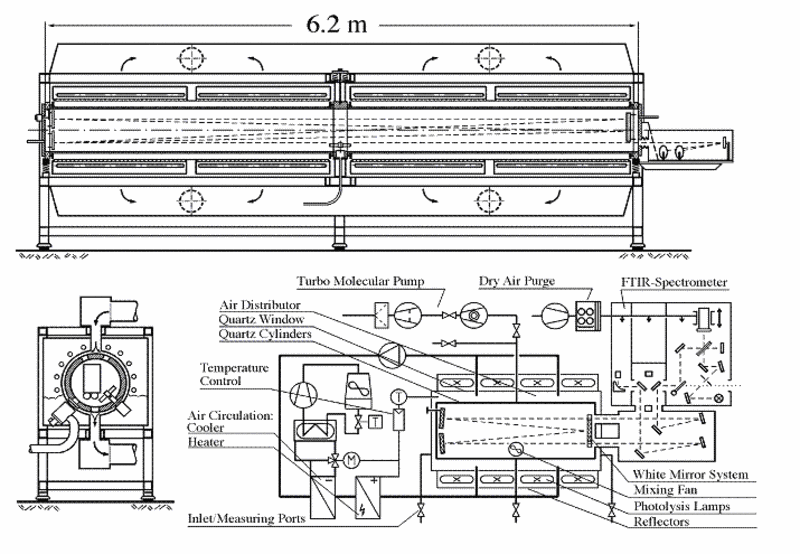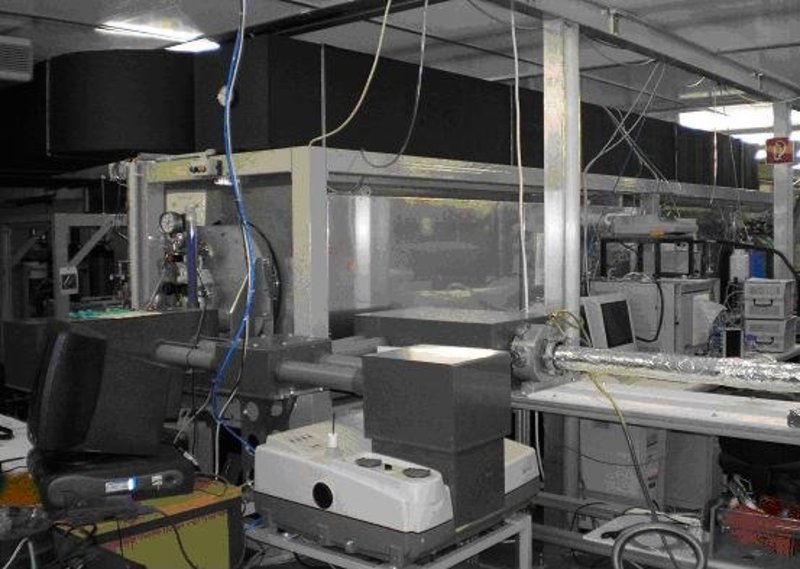Gas phase chemistry
The formation of photooxidants - especially ozone - in the so-called "photochemical smog" (also called "summer smog") is one of the greatest environmental policy problems in the summer. The formation of the photochemical smog occurs when three main conditions are met: increased emissions of volatile organic compounds (VOCs), increased emissions of nitric oxides (NOx = NO + NO2 ) and intense solar radiation. In addition, meteorological factors play an important role. The ozone formation in this system results from very complex, sunlight-driven gas phase reactions of the VOCs in the presence of NOx . If one wants to explain the formation of a photosmog situation, interactions of a large number of chemical, physical and meteorological processes have to be considered. Computer simulations (model calculations) are an important tool for this and can provide information bases for environmental policy decisions. The prerequisite for the success of such simulation calculations is, however, the most accurate understanding of the oxidative degradation mechanisms of volatile hydrocarbons in the troposphere, which are determined by photolysis and radical reactions in the gas phase. Oxidative degradation processes are initiated by radicals and reactive molecules such as the hydroxyl radical (OH), the ozone (O3 ) and the nitrate radical (NO3 ), whereby most oxidation processes are carried out via OH radicals.
In large-volume simulation chambers, single reactions and complex reaction sequences that are significant in the atmosphere can be investigated. Since the end of the 1970s, physical chemistry in Wuppertal has been concerned with elucidating the chemical and physical properties of volatile organic compounds in the gas phase. As a rule reaction chambers with volumes from 0,42 m3 to 1,08 m3 (see figure) are used for the experiments. The compounds to be investigated are examined in the reaction chambers with highly sensitive analytical methods (e.g., long-path FTIR and UV spectrometry, GC-FID, GC-MS). In addition to the measurement of the IR and UV absorption cross sections, the photolysis rates as well as the rate constants of the reactions of these compounds with OH radicals, ozone and NO3 radicals are determined. Furthermore, the products of these reactions are detected quantitatively so that the most complete possible degradation mechanism of the compounds can be established.

Schematic design of the 1080 l quartz glass reactor

Photo of the above schematically illustrated reactor; In the foreground are the FTIR spectrometer as well as the transfer optics
